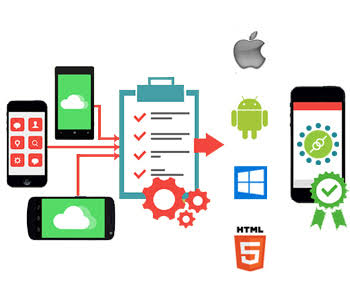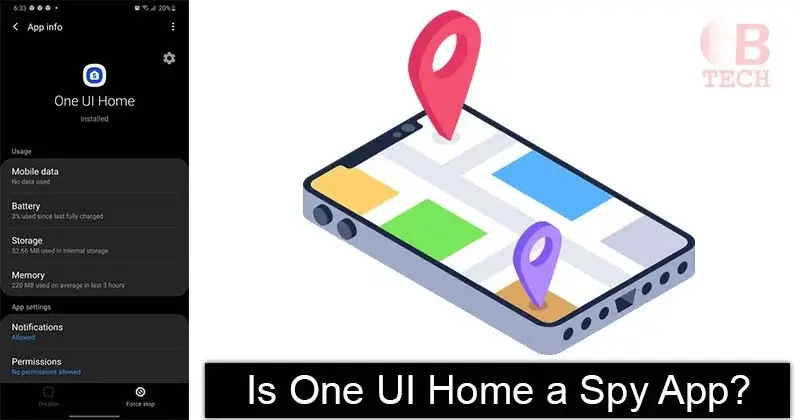To provide clients with the quickest and most convenient method of receiving goods and services, a majority of businesses rely on mobile applications. Companies are investing heavily in their various business applications to enable a seamless client experience. Delivering top-notch mobile apps, however, is essential for the best user experience, rapid loading, and continuous operation.
A minor mistake has the power to ruin the entire user experience for a consumer, regardless of how scalable or visually appealing the mobile app may be. Because it verifies all possible problems before release, automated mobile testing plays a crucial role in this situation.
For testers, product managers, DevOps, or QA engineers interested in delivering the best possible user experience through mobile apps, this checklist will offer insights on various Mobile App Testing Scenarios.
Test app for cross-platform compatibility
Every program must run without a hitch on all popular platforms and gadgets. This includes all key platforms operating on all commonly used mobile devices. The use of actual hardware and browsers is the most effective approach to do this. Apps must be tested on the same real devices that all users will use.
Make use of a cloud-based testing platform that offers genuine testing instruments. Numerous platforms for testing mobile apps provide thousands of actual devices and browsers for both automated and manual testing. Hundreds of real Android and iOS devices are available for automated app testing on real devices. Mobile app testing is also possible with mobile devices.
Evaluate the App in Different Situations
Mobile applications are used in a variety of contexts and situations. Testing must be done in as many different environments and situations as feasible to provide the best user experience possible. This entails conducting tests in various environments, including labs and outdoor spaces, and under various conditions, including fluctuating network speeds and signal strengths. This lets you find and fix any potential problems before your users do.
Continued Inspection
Programs for mobile devices are often updated. The mobile app is checked frequently to ensure it is still functioning properly. To keep current with changes, it is essential to have a dedicated team that can test the updates as soon as they are released.
User Interface (UI) & User Experience (UX) Testing
The usability testing checklist for mobile applications can also include user interface and user experience testing since it is essential to review the mobile UX layout and design as they might impact the end-user experience.
The next step is to verify that the buttons, menus, and drop-downs respond appropriately and produce the required results. Additionally, make sure that navigating across many displays is fluid.
Additionally, consistency across various devices is tested to ensure the application functions effectively and quickly across various platforms.
Base your test cases on the type of app you are testing
Three types often apply to mobile apps: native, web, and hybrid.
- Web app testing
Web apps should be evaluated for user interface (UI) to ensure that all elements are positioned correctly across various screens and resolutions, even if they are optimized for mobile browsing and server-driven. Check the amount of memory and energy the mobile applications use, as they have limited storage and power. Steer clear of using too much JavaScript since this might drain the battery on your phone.
- Native and Hybrid app testing
Different technologies power native and hybrid apps, but they have comparable functionality and, thus, test in a similar way. Functional testing is essential in verifying important features like screen orientation, gestures, compatibility, connection, performance, and interruptions like calls and push alerts.
Functional Testing
Although native and hybrid applications use distinct technology to function, they test similarly since they share similar functionality. Functional testing is crucial to confirm crucial aspects, including screen orientation, motions, compatibility, connectivity, performance, and interruptions like calls and push alerts.
Localization Testing
Mobile applications are widely utilized across the world. Localization testing should be included on your mobile app testing checklist because you want to ensure that your app is correctly translated and localized for multiple languages and locations and that no design (or functional) aspects fail as a result of any localization-related modifications.
Interrupt Testing
Interrupt testing is an essential component of any mobile device testing checklist. Interruption tests guarantee that your mobile app responds effectively to interruptions like alerts and phone calls. For example, you may ensure that progress in your application is retained if a user switches applications or answers a phone call while using your app.
Accessibility
Mobile applications should be available to anyone. Mobile app accessibility is essential for developers since it guarantees that persons with disabilities have equal access to and usage of mobile apps as non-disabled users. To verify that the Mobile App is accessible, QAs need to perform Accessibility Testing, which involves testing the app’s UI to see if persons with disabilities can use it.
Memory Consumption of Mobile Apps
Every mobile app testing on a real device checklist addresses the app’s memory usage. While every user wants more helpful features in their apps, remember that incorporating some features increases memory use. Push alerts, for example, nearly always cause Android apps to use more RAM.
Remember that not every user is using the newest smartphone or one with a long battery life. If a program takes up too much memory, users can remove it. Similarly, people would delete an app that consumes the battery quickly.
Benefits of the Checklists
- Ensures the application’s performance.
- Provides a high-quality product for target consumers.
- Enhances user engagement.
- Boosts sales and income.
- Improves the organization’s reputation.
Furthermore, we developed these checks to ensure a bug-free and productive application. Sometimes, a small error turns into a big blunder.
As a result, the quality assurance team should always be vigilant and cross-check the application against the checklist. As a consequence, these checks improve the performance of mobile apps.
Now, make your application bug-free and inform the world about your vulnerability. In addition, we consistently prioritize raising awareness of the product’s quality and dependability.
Furthermore, testing is an integral aspect of development, and disregarding it will result in the worst possible outcome for the program. As a result, quality should always be prioritized, which can only be accomplished through rigorous testing.



